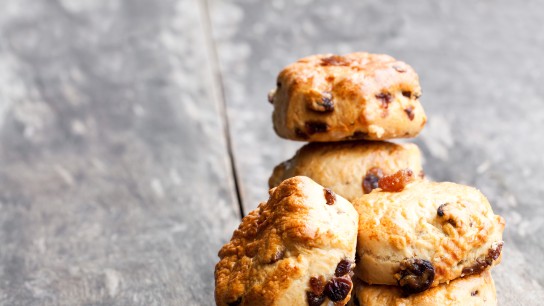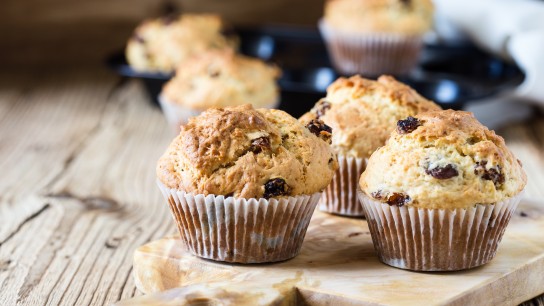Reduced sugar rush: bakery and confectionery rise to the challenge


The drivers behind the sugar reduction trend are complex and varied. In some countries, governments and public health organisations are taking the lead. In the UK, for example, for the last few years, the bakery and confectionery industries have been working towards Public Health England’s goal of 20% sugar reduction by 2020. In some other European countries, including France, Germany, the Netherlands, Switzerland and Spain, the government-led roll-out of the Nutri-score voluntary nutritional labelling system is providing an impetus for sugar reduction.
Nutri-score uses colour-coding to help consumers to assess the nutritional value of food and drink products. Added to this is the rise of apps such as Yuka, which will advise consumers against products that are high in fat, salt, sugar and additives. Consumer information systems have never been so powerful and a clean label, favourable nutrient profile has never been more desirable than in the current climate.

But the industry’s sugar reduction efforts are not just a response to pressure from the establishment. They are a response to overwhelming consumer demand. All the evidence indicates that the market wants sugar reduced NPD. In a 2019 Innova Market Insights survey, 65% of German consumers, 66% of British consumers and 72% of Spanish consumers said that sugar content influenced their purchase decisions.
Recognising their audiences are receptive and engaged, manufacturers are leveraging sugar reduction as a business growth strategy. In bakery, sugar reduction has become a fast-growing platform; between 2015 and 2019, the number of products carrying sugar reduction claims experienced double digit growth, according to Innova.

Sugar reduction evolves
Claims tracked by Innova include ‘no added sugar’, ‘sugar free’, ‘low sugar’ and ‘HFCS free’. Sugar reduction comes in many forms. According to Adeline Duchatel, Application Lab Manager at Brenntag Food & Nutrition, France, ‘less sugar’ and natural alternatives to refined sugar are taking over as the most popular sugar reduction strategies.
“The ‘no added sugar’ trend, which was very prevalent between 2015 and 2019, has given way to a ‘less sugar’ trend, coupled with demand for ‘healthier’ alternatives to white sugar. Sweeteners have lost momentum. This shift in sugar reduction approaches is closely linked to the clean label drive.”
The market opportunity is massive, but so are the challenges. Creating clean label products that contain less sugar but still taste good is no mean feat. And it is a challenge that is compounded by the plethora of functions that sugar performs in baked goods and confectionery.

Sugar: the miracle maker
“Sugar is a miracle ingredient,” says Adeline. “In addition to its taste function, this versatile raw material plays a crucial role in achieving texture, colour, viscosity, mouthfeel and flavour.” Sugar’s ability to act as a preservative is another of its qualities that is prized by developers of baked goods, as Adeline explains: “Sugar is hygroscopic, which allows it to fix the water around it. Once fixed, the water is no longer free, so the water activity (Aw) value drops and microbes no longer have enough free water to develop,” she says.
Sugar plays an important role in achieving an appealing appearance and texture through its elasticising properties, which improve dough volume and structure, as well as helping to kick-start fermentation and soften dough, allowing for easier handling. Sugar is also an essential agent in the maillard caramelisation reaction, which gives baked goods colour, bread a crust and cookies a satisfying crunch.
In confectionery applications, sugar contributes many attributes beside sweetness. These include bulk, texture, visual appeal and aeration in some products. Sugar’s elasticising properties are crucial for giving the desired shape to products, plus sugar is responsible for the texture of soft candies like fondants, fudge and chews.

A return to calorie counting
Meanwhile, in the UK, another trend – calorie control – is unfolding, as Steve explains. “Total energy intake has been a topic of concern for many years in the UK in connection with rising rates of obesity and type 2 diabetes. In recent years there has been a special emphasis on sugar reduction with the Soft Drinks Levy and PHE’s sugar reduction targets,” he says.
However, he notes that in the last year, these priorities have been overshadowed by the pandemic. “During lockdown many individuals adopted a more sedentary lifestyle, which often went hand in hand with increased consumption of food and snacks and an increase in body weight. Consequently, there is now a focus on total energy intake again and a renewed interest in calorie control.”

Brenntag’s F&N UK team has developed a 30% sugar reduced muffin recipe using Frutalose L92 and Frutafit CLR – two polysaccharide inulin ingredients derived from chicory root fibre. Each brings mouthfeel and sweetness at a lower calorie value than either sugar or alternative bulking carbohydrates like maltodextrin. Frutafit is a powder and therefore lends itself well to inclusion in dry premixes, whereas Frutalose is a syrup. In this recipe, Frutalose was noted to improve the moistness of the sugar-reduced muffin versus the full sugar reference and is therefore preferred by some customers.
“In this recipe we achieved a 30% sugar reduction and a 5% calorie reduction, which is equivalent to between one- and two-level teaspoons of sugar removed from each muffin. A further development to also reduce the fat content would allow an even greater lowering of the calorie count,” says Steve.